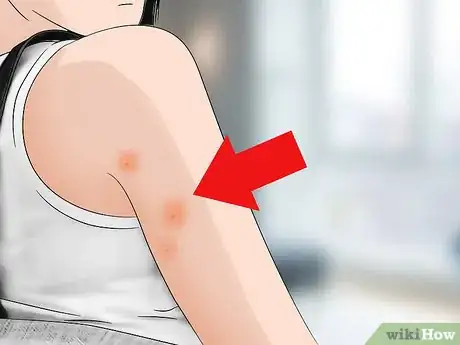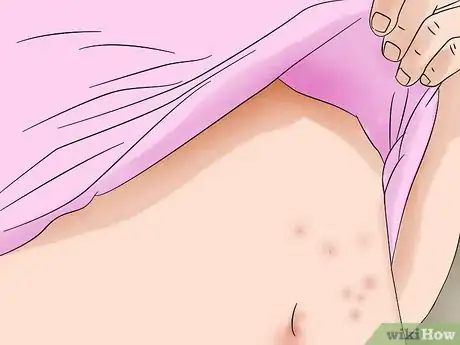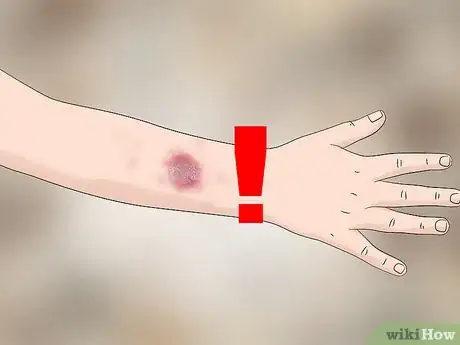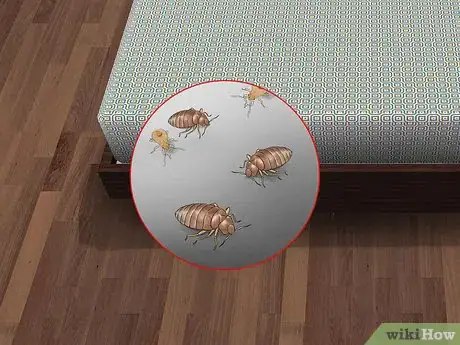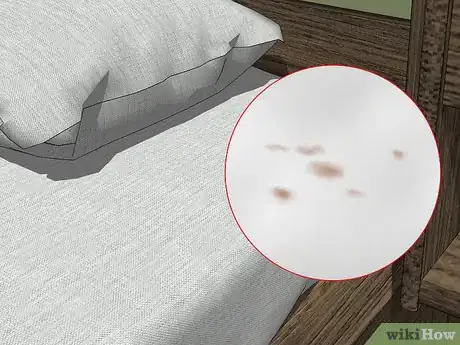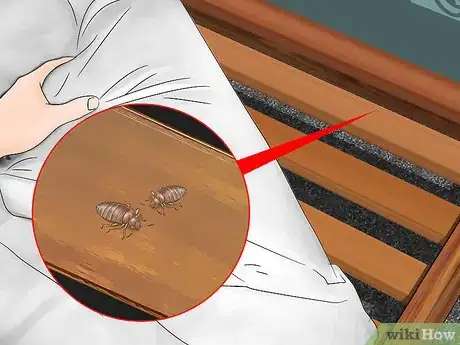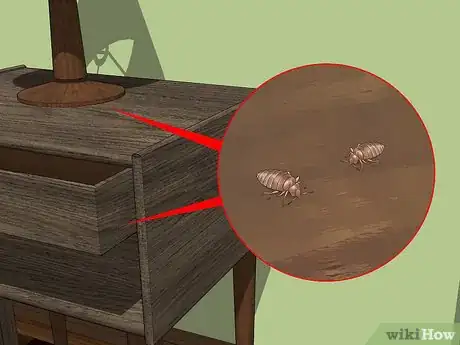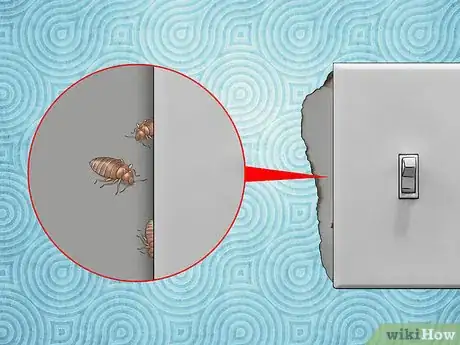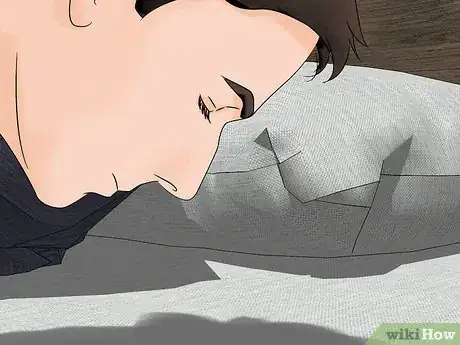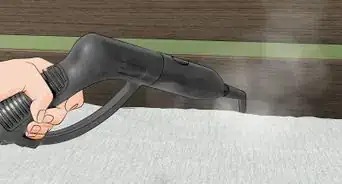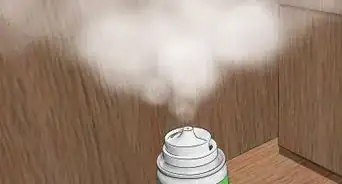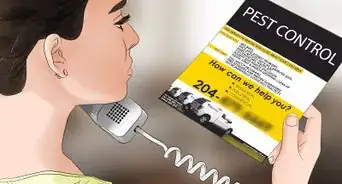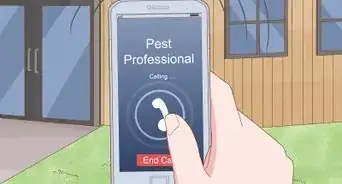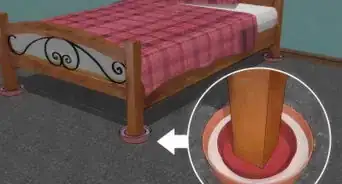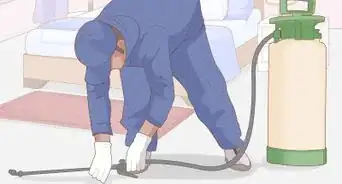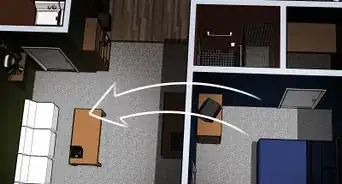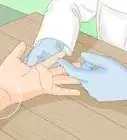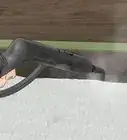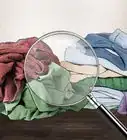This article was co-authored by Kevin Carrillo. Kevin Carrillo is a Pest Control Specialist and the Senior Project Manager for MMPC, a pest control service and certified Minority-owned Business Enterprise (MBE) based in the New York City area. MMPC is certified by the industry’s leading codes and practices, including the National Pest Management Association (NPMA), QualityPro, GreenPro, and The New York Pest Management Association (NYPMA). MMPC's work has been featured in CNN, NPR, and ABC News.
There are 7 references cited in this article, which can be found at the bottom of the page.
This article has been viewed 248,293 times.
Many people are familiar with the popular refrain, “good night, sleep tight, don’t let the bed bugs bite,” but not many of us can actually identify bed bug bites. This article will walk you through how to identify bed bug bites on your skin and confirm that you're dealing with a bed bug infestation (and not something else).[1]
Steps
Examining Your Bites
-
1Look for slightly discolored, pin-like raised red dots. These dots are usually about 0.2 cm to 0.5 cm in diameter, and may be in a line. You may also see hives or wheals that are significantly redder than the surrounding skin.[2]
- Note that 1 centimeter is equal to 0.4 inches.
-
2See if you have new bug bites when you wake up. If you wake up with fresh bug bites or itchy welts, you likely have bed bugs. See if they look and feel like mosquito or flea bites—bed bug bites are often red and slightly swollen, itchy, and irritating like other bug bites. Look for a series of bites that appear in a line or a random grouping of bites, as a single bed bug may bite several times in a row..[3]
- If you’re experiencing new bites during the day, it’s likely not bed bugs.
Advertisement -
3Watch out for signs of an allergy. If you’re allergic to bed bugs, you might find that you develop hives or a rash similar to eczema or a fungal infection.[4] Also check to see if the bites are getting larger, are painfully swelling, or even exuding a pus. These are also common signs of an allergy to bed bug bites.[5]
- Note that it can take up to 2 weeks for your body to fully react to a bed bug bite.
- Consult a doctor if you develop a severe reaction to the bite.
Checking for Bed Bugs
-
1Look for live bugs in your bed. Check for reddish-brown, wingless, flat insects that are about 0.1 cm to 0.7 cm. Examine the folds of mattresses and sheets for the bugs.[6] Also look for exoskeletons that bed bugs might have shed. Search for tiny white eggs or eggshells or white bed bug larvae.[7]
- Recall that 0.4 cm is the equivalent of 1/10th of an inch.
-
2Examine your sheets. Look for reddish or rusty stains on your sheets. These might be caused either by crushed bugs or by the bugs’ fecal matter. Wipe any dark or red dots you see on your bedding. If they smear or spread, they are likely bed bug excrement.[8]
-
3Inspect your bed frame. Look for any signs of bed bugs in your bed frame and in the space between your bed frame and the wall. Also look for bed bugs around your headboard. Check for them in the piping, seams, and tags of your sheets, mattress, and box spring.[9] Be sure to look inside pillow cases and on any throw pillows you might have on your bed.
-
4Look for bed bugs in other furniture. Check under chair cushions, look in the seams of chairs and couches, and examine the joints of drawers.[10]
-
5Search other small spaces. Look for bed bugs under loose wallpaper and wall hangings. Peer into electrical outlets, and in the spaces where the wall meets the ceiling and the floor. Also look for the bugs in the folds of curtains.[11]
-
6Check for a slightly sweet, musty odor. If the area where you suspect bed bugs has a funky smell, it’s a good indication of an infestation. Bed bugs release chemicals to help them communicate, which may lead to a sweet scent in your bedroom.[12]
Expert Q&A
Did you know you can get expert answers for this article?
Unlock expert answers by supporting wikiHow
-
QuestionHow do you treat bed bug bites?
 Kevin CarrilloKevin Carrillo is a Pest Control Specialist and the Senior Project Manager for MMPC, a pest control service and certified Minority-owned Business Enterprise (MBE) based in the New York City area. MMPC is certified by the industry’s leading codes and practices, including the National Pest Management Association (NPMA), QualityPro, GreenPro, and The New York Pest Management Association (NYPMA). MMPC's work has been featured in CNN, NPR, and ABC News.
Kevin CarrilloKevin Carrillo is a Pest Control Specialist and the Senior Project Manager for MMPC, a pest control service and certified Minority-owned Business Enterprise (MBE) based in the New York City area. MMPC is certified by the industry’s leading codes and practices, including the National Pest Management Association (NPMA), QualityPro, GreenPro, and The New York Pest Management Association (NYPMA). MMPC's work has been featured in CNN, NPR, and ABC News.
MMPC, Pest Control Specialist Treat the bites the same as you would any other insect bite. Use something soothing like calamine lotion while you wait for them to heal. If you're having a bad reaction and the bites aren't going away, talk to a dermatologist. They'll most likely recommend some kind of steroidal cream to apply to the bites.
Treat the bites the same as you would any other insect bite. Use something soothing like calamine lotion while you wait for them to heal. If you're having a bad reaction and the bites aren't going away, talk to a dermatologist. They'll most likely recommend some kind of steroidal cream to apply to the bites. -
QuestionWhat bugs can be mistaken for bed bugs?
 Kevin CarrilloKevin Carrillo is a Pest Control Specialist and the Senior Project Manager for MMPC, a pest control service and certified Minority-owned Business Enterprise (MBE) based in the New York City area. MMPC is certified by the industry’s leading codes and practices, including the National Pest Management Association (NPMA), QualityPro, GreenPro, and The New York Pest Management Association (NYPMA). MMPC's work has been featured in CNN, NPR, and ABC News.
Kevin CarrilloKevin Carrillo is a Pest Control Specialist and the Senior Project Manager for MMPC, a pest control service and certified Minority-owned Business Enterprise (MBE) based in the New York City area. MMPC is certified by the industry’s leading codes and practices, including the National Pest Management Association (NPMA), QualityPro, GreenPro, and The New York Pest Management Association (NYPMA). MMPC's work has been featured in CNN, NPR, and ABC News.
MMPC, Pest Control Specialist
-
QuestionCan you see bed bugs with the naked eye?
 Kevin CarrilloKevin Carrillo is a Pest Control Specialist and the Senior Project Manager for MMPC, a pest control service and certified Minority-owned Business Enterprise (MBE) based in the New York City area. MMPC is certified by the industry’s leading codes and practices, including the National Pest Management Association (NPMA), QualityPro, GreenPro, and The New York Pest Management Association (NYPMA). MMPC's work has been featured in CNN, NPR, and ABC News.
Kevin CarrilloKevin Carrillo is a Pest Control Specialist and the Senior Project Manager for MMPC, a pest control service and certified Minority-owned Business Enterprise (MBE) based in the New York City area. MMPC is certified by the industry’s leading codes and practices, including the National Pest Management Association (NPMA), QualityPro, GreenPro, and The New York Pest Management Association (NYPMA). MMPC's work has been featured in CNN, NPR, and ABC News.
MMPC, Pest Control Specialist
References
- ↑ https://www1.maine.gov/dacf/php/gotpests/bugs/documents/bed-bug-harvard.pdf
- ↑ Kevin Carrillo. Pest Control Specialist. Expert Interview. 22 October 2019.
- ↑ https://www1.maine.gov/dacf/php/gotpests/bugs/documents/bed-bug-harvard.pdf
- ↑ Kevin Carrillo. Pest Control Specialist. Expert Interview. 22 October 2019.
- ↑ https://www.cdc.gov/parasites/bedbugs/faqs.html
- ↑ Kevin Carrillo. Pest Control Specialist. Expert Interview. 22 October 2019.
- ↑ http://ipm.ucanr.edu/PMG/PESTNOTES/pn7454.html
- ↑ https://www.epa.gov/bedbugs/how-find-bed-bugs
- ↑ Kevin Carrillo. Pest Control Specialist. Expert Interview. 22 October 2019.
- ↑ Kevin Carrillo. Pest Control Specialist. Expert Interview. 22 October 2019.
- ↑ https://www.epa.gov/bedbugs/how-find-bed-bugs
- ↑ https://www.aad.org/public/diseases/a-z/bed-bugs-prevention
- ↑ https://www.ncbi.nlm.nih.gov/pmc/articles/PMC3617843/
About This Article
To identify bed bug bites, look at your skin first thing in the morning. Check places that are exposed when you sleep or covered by loose clothing. If you see fresh bites in a line or grouped together, they’re likely from bed bugs, which bite several times a night. Additionally, check the color and size of your bites. If your bites are raised, red, and about 0.2-0.5 cm in diameter, they’re probably from bed bugs. For information from our Medical reviewer on how to check your bed for bed bugs, read on!
